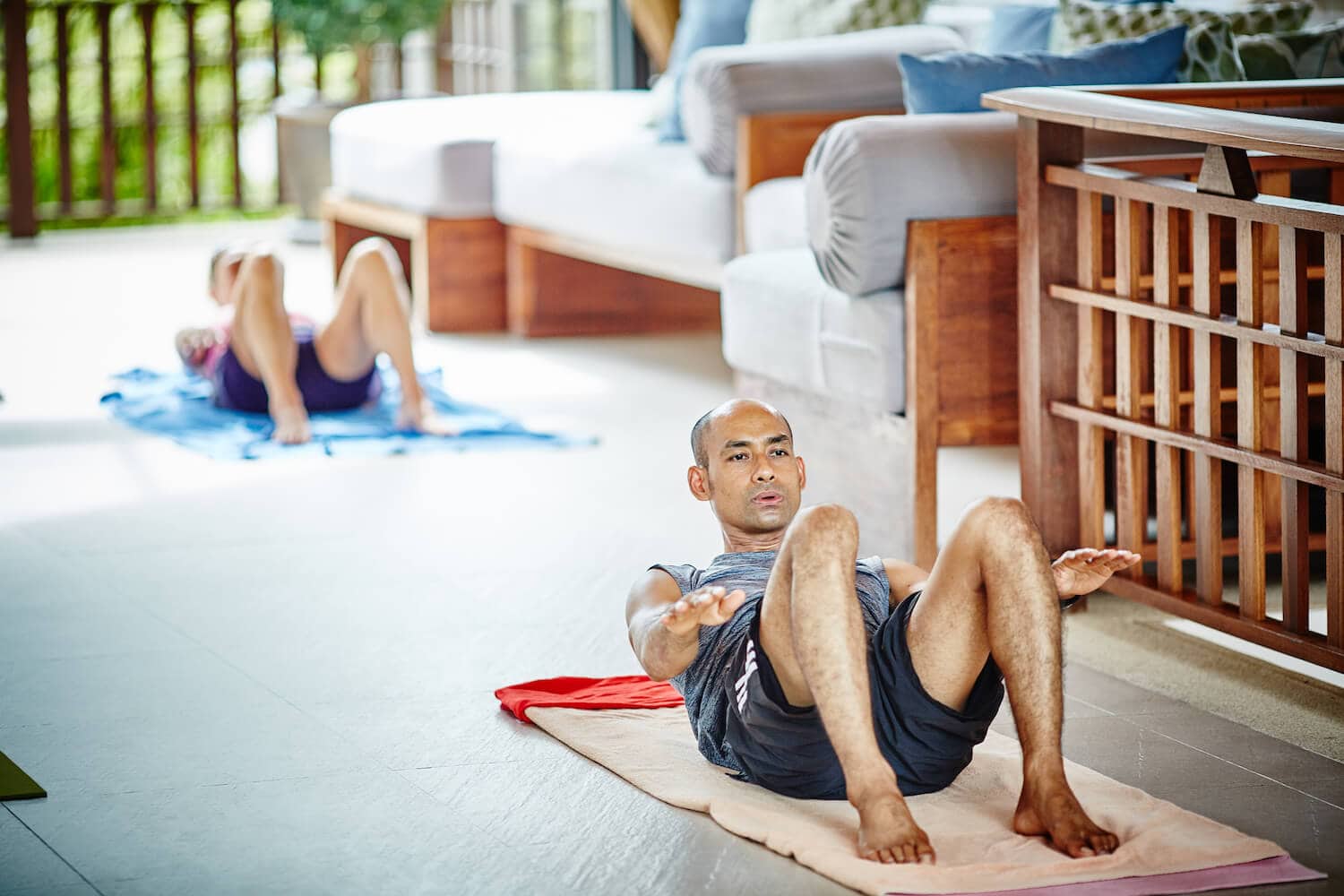While it’s not as widespread as yoga, pilates has a cult following of dedicated practitioners who know the value of the precise movements and supportive exercises that s. However, the precise nature of these movements is what makes it so easy to get wrong. Compare Retreats chats to Pilates Instructor Sanya at Chai Talay Retreat in Thailand to get some tips on how to perfect your Mat Pilates poses, and the mistakes everyone makes.

1. Keep your tailbone and shoulder blades off the floor
Even if you don’t take on board any of the other points, make sure you stick to this one. “The number one (and number two) thing is to lift your tailbone and shoulder blades off the floor,” says Sanya. This small movement will automatically engage your core, the main area trained by Mat Pilates. Even lying still and not doing any movements, you’ll feel the effects of this correct posture instantly. “When you do the exercise, you have to feel the area you’re working on—so if you want to build your core, you need to feel your core.”
2. Pull your belly button to your spine
This is not ‘suck your tummy in’ or ‘hold your breath’—keeping your breathing regular is vital—but visualise pulling your belly button to meet your spine, explains Sanya. Keeping this area tense will reinforce step one. “Tense the stomach like you’re taking a punch,” says Sanya. If your tailbone and shoulder blades are off the floor, this will already be much easier.
See also: Heather Thomas Shalabi On Why Everyone Should Practice Pilates
3. Engage the pelvic floor
“Everyone always laughs when I say this,” says Sanya, “the easiest way to explain it is — no pee-pee.” Engaging the pelvic muscles not only supports the core and back, but can be a great way of rebuilding muscle tone in the pelvic area for women post-birth. The best way to describe the feeling of this movement, as Sanya says, is holding a pee—a small movement that makes a big difference.
4. Don’t let your ‘friends’ help
Not literally, of course, but Sanya describes six ways in which we reduce the effectiveness of these basic Pilates exercises. “Our body is very good because the different parts are always trying to help each other out, like friends. For example, if you’re doing an exercise for your leg, the knee will often bend to help when the muscles are tensing, but this makes the exercise less effective.” Sanya highlights five body parts to watch for: the lower back, knees, chin bone, neck, and elbows, with ‘momentum’ as an honorary sixth. Pain in the back or neck might indicate that you’re using one of these areas to compensate.
See also: The Top Yoga, Pilates and Barre Studios in Hong Kong
5. Pay attention to angles
The final part of perfecting posture is making sure those angles are precise. “When you’re bending your knee, it needs to be held at 90 degrees, which means its aligned above your hips directly. To make sure your elbows aren’t helping, they need to be open out to the side and your chin, it’s never to your chest—you’re always looking up at 45 degrees.” Pay attention to these angles, and always check in with your instructor for corrections to your posture—with Pilates, the little things make the difference.



